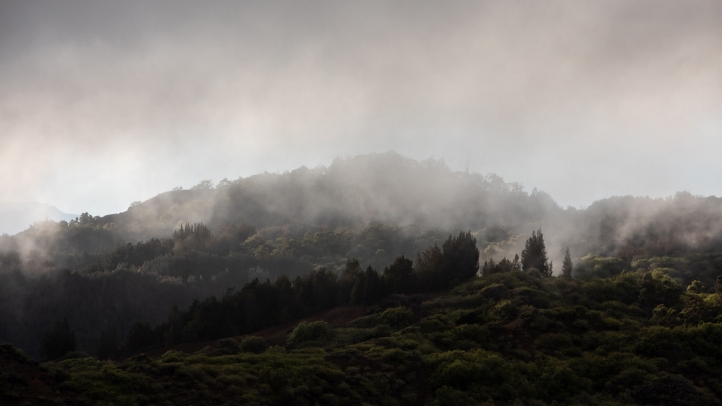A History of Koele







Home to Sensei Lanai, A Four Seasons Resort and Four Seasons Resort Lanai, the island of Lanai is rich in contrasts, offering secluded sandy beaches, red rock fields and cool mountains yielding vistas, on a clear day, of neighbour islands. In the middle of the island is the area named Koele – the lush, green upcountry. Koele is said to be named for the moisture-laden clouds that came down from the mountain gulches.
Koele is located in the ahupuaa of Kamoku on the island of Lanai. Kamoku is one of thirteen ahupuaa — ancient land divisions that partitioned the island’s land and resources. The most notable era of Koele’s history is from 1875 to 1951. During this period of about 75 years, Koele served as the headquarters for Lanai’s ranching operations.
In 1875, Walter Murray Gibson secured the lease of the ahupuaa of Kamoku from the Hawaii Kingdom government. He established the ranch headquarters at Koele and developed a small community of homes for himself and his ranch hands. Gibson imported angora goats for their skins and merino sheep for their wool.
Around this time, Gibson planted the first two Norfolk Island pines at Koele. These trees were gifts to Gibson from his good friend, King David Kalakaua, ruler of the Hawaiian Kingdom from 1874 until his death in 1891. In 1884, a report published in the Hawaiian Directory stated that the ranch livestock inventory included 40,000 head of sheep, 3,000 angora goats, 600 horses and 200 head of cattle.
Gibson passed away in 1888. His estate, which is daughter Talula and her husband Frederick Hayselden inherited, consisted of most of the island of Lanai in fee simple or leasehold interests. Hayselden attempted several businesses including the Lanai Ranch Company, the Maunalei Sugar Company, and the Palawai Development Company.
The Maunalei Sugar Company debuted in 1898. During the sugar company’s three-year existence, three wells were dug, the Kahalepalaoa landing, and a railroad were built to facilitate shipping. The Sugar Company imported as many as 800 Japanese, Chinese, and Portuguese laborers who lived in housing at Keomoku that was provided by the company. Plagued with growing financial challenges, the Sugar Plantation closed in 1901.
In 1902, Charles Gay purchased the properties of the former Gibson estate along with additional land, eventually owning virtually the entire island. This led to near bankruptcy and Gay conveyed his land holdings to his creditor, who then sold their interests in 1910 and the Lanai Company was established.
The budding venture was headquartered out of Koele and immediately sought out development of water infrastructure and agriculture production including pineapple production on the island. In a report of the Evening Bulletin dated November 28, 1910, it was noted that 7,000 pineapple plants were planted on Lanai. In 1911, the Lanai Company engaged renowned Hawai‘i and Maui rancher Eben Low to evaluate the Lanai operation. His report was extensive and included valuable descriptions of the Koele facilities.
In 1911, George C. Munro was hired as the new ranch manager and operations quickly shifted to cattle operations. Munro also worked to stabilize the landscape with the planting of eucalyptus, black wattle, iron wood, and various grasses. His work also extended up the mountain lands and led to the planting of thousands of Cook Island pine seedlings as a means of drawing moisture out of the clouds and recharging the diminishing aquifer. Munro came upon the idea of planting pine trees atop the island as a result of his observation that the lone Norfolk Island pine captured passing fog and clouds causing drip to occur at his Koele residence.
In 1917, Lanai was sold to Harry and Frank Baldwin and the ranch operated in a profitable state, under strong land stewardship until they sold the holdings to The Hawaiian Pineapple Company, which purchased Lanai for USD 1.5 million in 1922. Munro stayed on a bit longer, but at his retirement advised that pineapple cultivation, which began on Lanai in the early 1920s, be given priority. The ranch ultimately closed in 1951 and the island then became synonymous for the cultivation of pineapple.
From the site of the Koele Ranch and the start of trail rides, sweeping vistas of Lanai’s north end come into view. The three land divisions of Kaa, Paomʻi and Kamoku were once home to many rare plants, birds, and insects. Vegetation included native trees such as kukui, ohia, lama, ʻolopua, naio, and wiliwili. Ground cover consisted of plants such as aalii, ilima and pili. Unfortunately, the introduction of grazing animals such as goats, mouflon sheep, and deer, led to overgrazing. The vegetation that is seen on the trail today is mostly introduced and highly invasive. These plants include Brazilian pepper (otherwise known as Christmas berry), lantana, and Formosan koa.
There are many native traditions attached to this area, most notably that of Keahiakawelo. In the region of Kaa, Kawelo kept an altar on which a fire was burned to protect the well-being of the people of his island. At one time, it became evident to Kawelo that there was great famine on Lanai and people were falling ill. Kawelo determined that Lanikaula, a prophet on Molokai, was responsible for this occurrence. Lanikaula, while a prophet, was unable to foresee his own death. Kawelo hid Lanikaula’s excrement inside a sweet potato then set it aflame, which then fortold his demise. By putting Lanikaula to death, Kawelo brought health and prosperity back to the people of Lanai.
Another prominent legend in the history of Lanai is that of Kaululaau, a young chief of Lele (Lahaina). Kaululaau, son of Kakaalaneo, a high chief, was known for his strength and cunning deeds. As the child grew, his mischievous nature created many problems for his parents and the people of Maui. Eventually, the youth was banished from Maui and sent to Lanai to fend for himself. At that time in history, Lanai was reportedly inhabited by hordes of akua (spirits) under the dominion of Pahulu. Fearing for his own life Pahulu feigned friendship with Kaululaau, but his real objective was to kill him. While on Lanai, Kaululaau was accompanied by his own personal god, Lono. Together, the two travelled about Lanai, tricking the ghosts, killing them, and setting the lands free from their dominion. Koele is a place that is special in the hearts of many.
Download the free Lanai Guide App and to learn more about these stories, find interactive maps, photos and more.
Four Seasons Resorts Lanai is committed to caring for the land and understanding, preserving, and sharing the island’s culture, traditions and history throughout its operations. Conserving energy and precious natural resources, developing strategic partnerships, implementing sustainable practices and engaging colleagues in education and stewardship allow the Resorts to respect and care for its island home. Through Love Lanai, guests can experience the island’s unique living environment and cultural-historical legacy that spans nearly 1,000 years of Hawaiian residency and a diverse cultural heritage though a variety of tours, demonstrations, and cultural experiences through unique, authentic and respectful programming.

Los Angeles, 90045
USA




 @FourSeasonsPR
@FourSeasonsPR